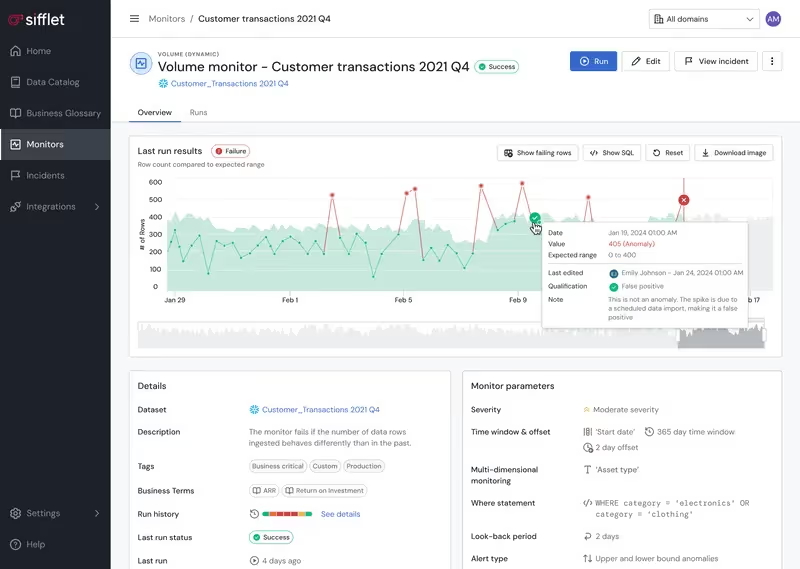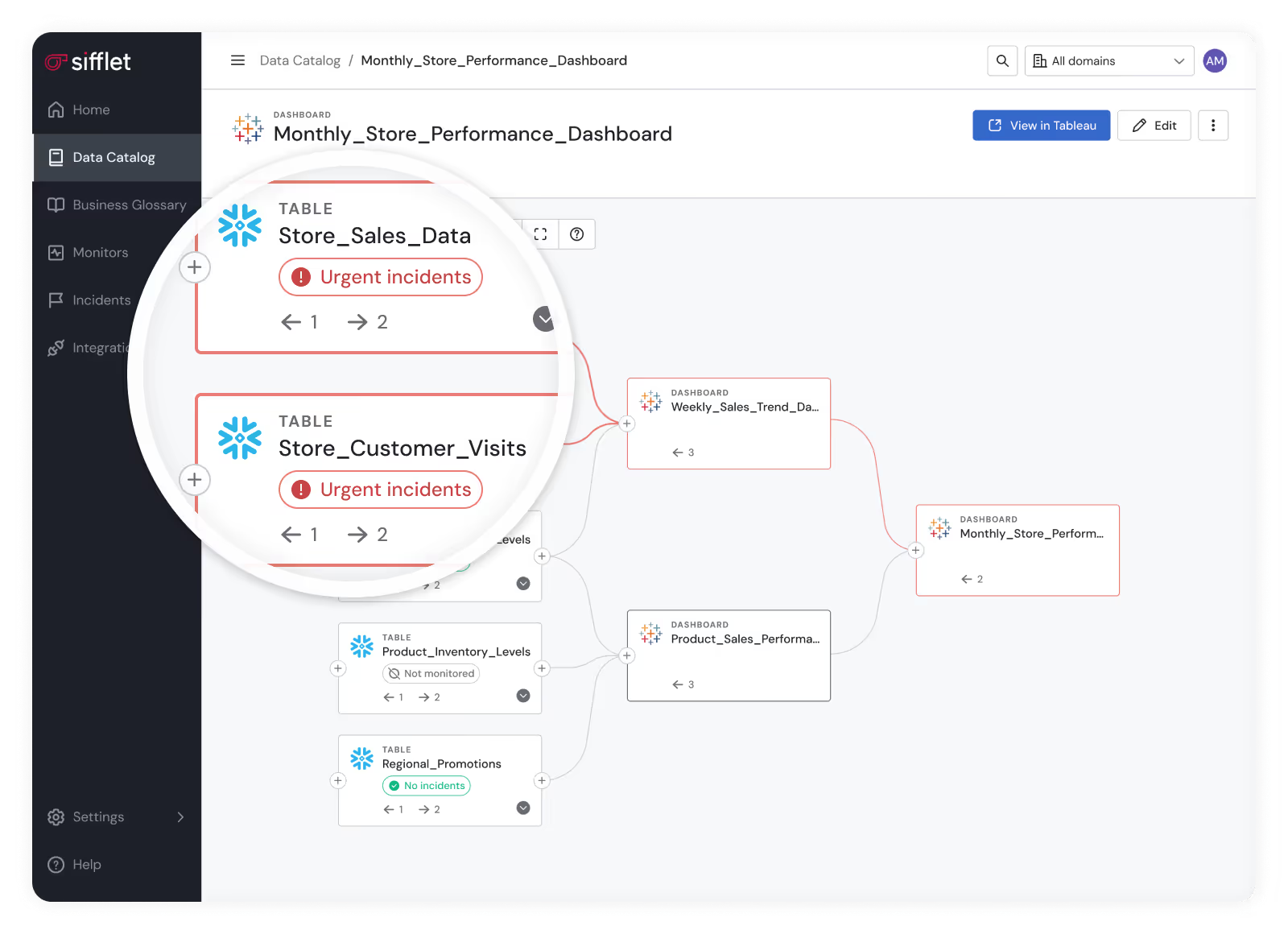A Seriously Smart Upgrade.
Prevent, detect and resolve incidents faster than ever before. No matter what your data stack throws at you, your data quality will reach new levels of performance.















No More Over Reacting
Sifflet takes you from reactive to proactive, with real-time detection and alerts that help you to catch data disruptions, before they happen. Watch your mean time to detection fall rapidly. On even the most complex data stacks.
- Advanced capabilities such as multidimensional monitoring help you seize complex data quality issues, even before breaks
- ML-based monitors shield your most business-critical data, so essential KPIs are protected and you get notified before there is business impact
- OOTB and customizable monitors give you comprehensive, end-to-end coverage and AI helps them get smarter as they go, reducing your reactivity even more.

Resolutions in Record Time
Get to the root cause of incidents and resolve them in record time.
- Quickly understand the scope and impact of an incident thanks to detailed system visibility
- Trace data flow through your system, identify the start point of issues, and pinpoint downstream dependencies to enable a seamless experience for business users, all thanks to data lineage
- Halt the propagation of data quality anomalies with Sifflet’s Flow Stopper















Still have a question in mind ?
Contact Us
Frequently asked questions
Which industries or use cases benefit most from Sifflet's observability tools?
Our observability tools are designed to support a wide range of industries, from retail and finance to tech and logistics. Whether you're monitoring streaming data in real time or ensuring data freshness in batch pipelines, Sifflet helps teams maintain high data quality and meet SLA compliance goals.
What is data observability, and why is it important for companies like Hypebeast?
Data observability is the ability to understand the health, reliability, and quality of data across your ecosystem. For a data-driven company like Hypebeast, it helps ensure that insights are accurate and trustworthy, enabling better decision-making across teams.
How does Sifflet enhance data governance for my organization?
Sifflet supports data governance by allowing you to classify assets with tags and labels, define business terms in a shared glossary, and track data lineage. These features help ensure consistent definitions and safe handling of sensitive data across your stack.
How does Sifflet help with data lineage tracking?
Sifflet offers detailed data lineage tracking at both the table and field level. You can easily trace data upstream and downstream, which helps avoid unexpected issues when making changes. This transparency is key for data governance and ensuring trust in your analytics pipeline.
How does Sifflet help with anomaly detection in data pipelines?
Sifflet uses machine learning to power anomaly detection across your data ecosystem. Instead of relying on static rules, it learns your data’s patterns and flags unusual behavior—like a sudden drop in transaction volume. This helps teams catch issues early, avoid alert fatigue, and focus on incidents that actually impact business outcomes. It’s data quality monitoring with real intelligence.
How does Sifflet help teams improve data accessibility across the organization?
Great question! Sifflet makes data accessibility a breeze by offering intuitive search features and AI-generated metadata, so both technical and non-technical users can easily find and understand the data they need. This helps break down silos and supports better collaboration, which is a key component of effective data observability.
Can Sifflet Insights help with data pipeline monitoring?
Absolutely! Sifflet Insights connects to your broader observability platform, giving you visibility into data pipeline health right from your BI dashboards. It helps track incidents, monitor data freshness, and detect anomalies before they impact your business decisions.
How does Sifflet help with SLA compliance for business metrics?
By combining real-time metrics monitoring with proactive alerts and incident management workflows, Sifflet helps teams stay on top of SLA compliance. Users can track metrics freshness, detect anomalies, and take action before SLA breaches occur.




















-p-500.png)
